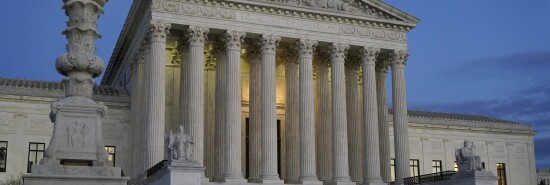
The Left’s new worries about an ‘imperial court’ are risible
Quin Hillyer
Video Embed
For the Left, judges are “imperial” only when the judges reach non-leftist results.
For decades, the Left and its house organ, the New York Times, belittled conservatives for worrying about judges who aggregate too much power. Now that the Supreme Court has a more conservative majority, the Times’ Adam Liptak joins fellow leftists who suddenly worry that, yes, judges have too much power.
WHAT MIGHT 2023 BRING FROM THE SUPREME COURT?
The alleged conservative power grab is “alarming scholars,” according to the headline on Liptak’s article, because the conservative high court supposedly has “rapidly been accumulating power at the expense of every other part of the government.” Liptak accurately cites five separate studies which, combined, do reach such a conclusion. The studies, however, are full of tendentious assertions that misdescribe what the conservative justices are doing. Sometimes the studies’ authors “reason” backwards from the case results with which they disagree in order to ascribe partisan or ideological motives to the justices, all while ignoring the real substance of the justices’ opinions.
Thus, when the high court decides that administrative agencies are using too much discretion in rule-making, the studies’ authors and Liptak accuse the court of seizing power for itself, not for Congress. That’s poppycock. The court is ensuring that Congress, not the executive or judicial branches of government, actually does legislating — what a novel idea.
Similarly, the leftists say the court is seizing power when it invalidates state governmental actions of various sorts. Again, balderdash. Rather than seize power for itself, the court is insisting that states abide by the Constitution’s reservation of individual rights to the states’ citizens. The constitutional liberties and the citizens who use them, not the judges, command authority.
In almost all instances, the studies and Liptak give no credit to the justices’ careful explanations of how the Constitution, statutes, or regulations command the results they reach. If the “result” is favored by political conservatives, according to these “scholars,” then by gosh the justices must have twisted their reasoning to reach that result rather than honestly applied the laws as written.
Space doesn’t allow a point-by-point refutation of the slipshod (or ill-motivated) allegations made in the five studies Liptak cites, so just a few must suffice. Ed Whelan at National Review Online, for example, deftly skewered a study by Stanford Law Professor Mark Lemley. According to Lemley, in last year’s case about a public-school football coach praying on the field after games, “the Court took the remarkable step of rewriting the facts of the case.” Whelan destroyed this accusation, comprehensively showing not that the liberal and conservative justices were disagreeing about the substance of the facts at all, “but on the very different matter of which facts are relevant to the legal question before them.” Whelan also showed conclusively that the facts cited by the conservative justices were the ones on which the case actually rested, based on the grounds the school district itself identified for disciplining the coach.
Not to pick on Lemley — the four other studies also have flaws — but Lemley’s essay is particularly shoddy. He claims “the Court created new rights” when it asserted “the right to carry guns in public and the right of government officials to pray at public events,” while also “withdrawing rights from the public” when it “eliminated the right to reproductive freedom” and “eliminated the power of federal courts to enforce the right to vote” because it won’t limit “partisan gerrymandering” the way Lemley wants.
Even setting aside the harshly disputed issue of whether a coach after a game is acting as a “government official,” Lemley’s examples are outlandish. Nowhere does Lemley acknowledge that gun rights and the free exercise of religion are explicitly mentioned in the Constitution, whereas the claim that abortion is a “right” has no specific textual basis. Likewise, the idea that “gerrymandering” denies “the right to vote” would be a surprise to Framers such as Elbridge Gerry and their heirs, who used it for nearly two centuries without serious constitutional challenge.
In short, Lemley defines “rights” not by the actual words of the Constitution, but by his personal political preferences. He is the center of his own universe, and to him, the conservative justices are acting arbitrarily when they don’t reach his desired result. The mote in his own eye is massive.
The Left’s interpretive lens sees everything in terms of power politics. So, as per Lemley, Liptak, and the others, today’s supreme tribunal “is a court that is consolidating its power.”
Wrong. This is a court trying to follow the Constitution in determining who has power in what circumstances. Again and again, it is a Supreme Court that subordinates the justices’ own policy preferences to the authority of the American people, as expressed through the people’s permanent charter of ordered liberty.
